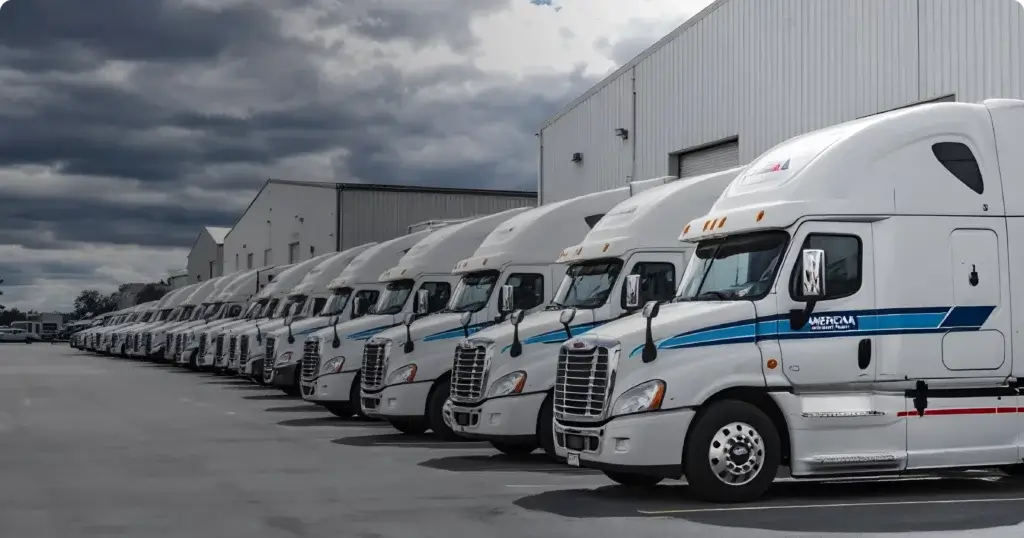When winter hits the US and the roads turn white, trucking becomes challenging. Winter storms challenge the trucking sector’s safety and profitability. The Federal Highway Administration reports that more than 24% of vehicle crashes occur each winter, 15% of which are related to snowfall.
When a truck is involved in these types of accidents, the outcomes can be deadly and dangerous for not just the trucker but for people traveling nearby as well.

Let’s examine what driving during the winter is like and how drivers can stay safe.
Trucking in Winter
Driving in the winter is undoubtedly difficult because of the snowfall, freezing rain, and cold winds. It becomes too challenging to stay on the road without skidding off when there is fog or as black ice and slick surfaces build up. In one of its recent reports, CNN highlighted how snow has begun to complicate travel as the storm moves from the Southern region to the Northeast. This makes it challenging to plan the routes, modify the delivery schedules, and add enough buffer.
Winter comes during the holiday season, which means truckers have more work to do, getting gifts and supplies delivered from one end to the other, not to forget filling in for others who will likely be taking breaks.
However, as year-end shopping and fiesta continue all the way until the end of the month, this can be a commercially busy time for truckers and trucking companies. This winter season can be highly profitable and successful if proper precautions and safety rules are observed.
What To Keep in Mind While Being on Road in Winter?
Get the Right Tire Based on the Location
Governments in various states have been emphasizing how important it is for truckers to follow weather warnings and maintain proper tire pressure. Tires with better grip and motion control abilities can handle slick and blocked roads. For instance, full skid tires are useful when driving in extremely cold winters. Investing in tire chains may also help you drive more safely in the snow.
Make Sure the Lights Work
You must thoroughly inspect your fleet’s front, rear, and side lights before hitting the road. These lights assist in keeping a safe distance between the vehicles during the winter months when visibility is poor, thus, improving safety. Additionally, it’s important to keep checking the lights and clear away any snow accumulations while en route. In harsh weather, these may be your only source of visibility assurance.
Equip Your Truck with Technology
Modern technologies are being added to trucks, assisting truckers in driving more safely and even alerting fleet managers in the event of an accident. With temperature and door sensors, it is easy to comprehend the condition of the freight during such severe weather.
Installing cloud dashcams allows for better condition monitoring by capturing driver behavior in real-time as well as the road ahead. They also help in case of crashes when it comes down to establishing root causes while claiming insurance. All of the data is stored in the cloud, so in the event of an accident, the recorded footage may be used to support an insurance claim and demonstrate the driver’s innocence as needed. On top of that, managers can assist in changing routes when needed with the help of asset management solutions.
Invest in Heaters and Batteries
The best heating system and strong batteries are the two things you should check twice or even thrice before hitting the road. The right battery set is necessary, especially in cold weather, because breakdowns can happen anytime. Truck drivers may become stranded for a considerable amount of time in severe weather without any hope of assistance due to dead batteries and limited movement on snow-covered roads. Additionally, a top-notch heating system is necessary to quickly warm up the engine and get it moving without waiting.
Keep a Buffer
When committing to deliveries across borders or states, truckers and managers need to address the possibility that anything could go wrong on the road and thus keep a buffer time for deliveries. When something breaks down, the truckers can take a break and collect their thoughts with the help of these buffers rather than freaking out to reach on time. A probable delivery date might work better than a firm one because roads can occasionally become blocked, there can be traffic jams, and there may be other factors that can cause delays.
Load the Right Toolkit
Nobody is immune to the typical issues that can arise while driving in the winter. When necessary, the trucker may need to use the toolkit to clear a particular obstruction or check other sections. The proper toolkit needs to be loaded in the truck in order to deal with these situations, keeping all of these potential scenarios in mind.
In this winter season, truckers require an additional level of security. Favorably, technology can help with that. Whether it be dashcams, sensors, or other technological devices, TruckX offers many of the tools that are best for trucking during the winter season. Explore our offerings here.









